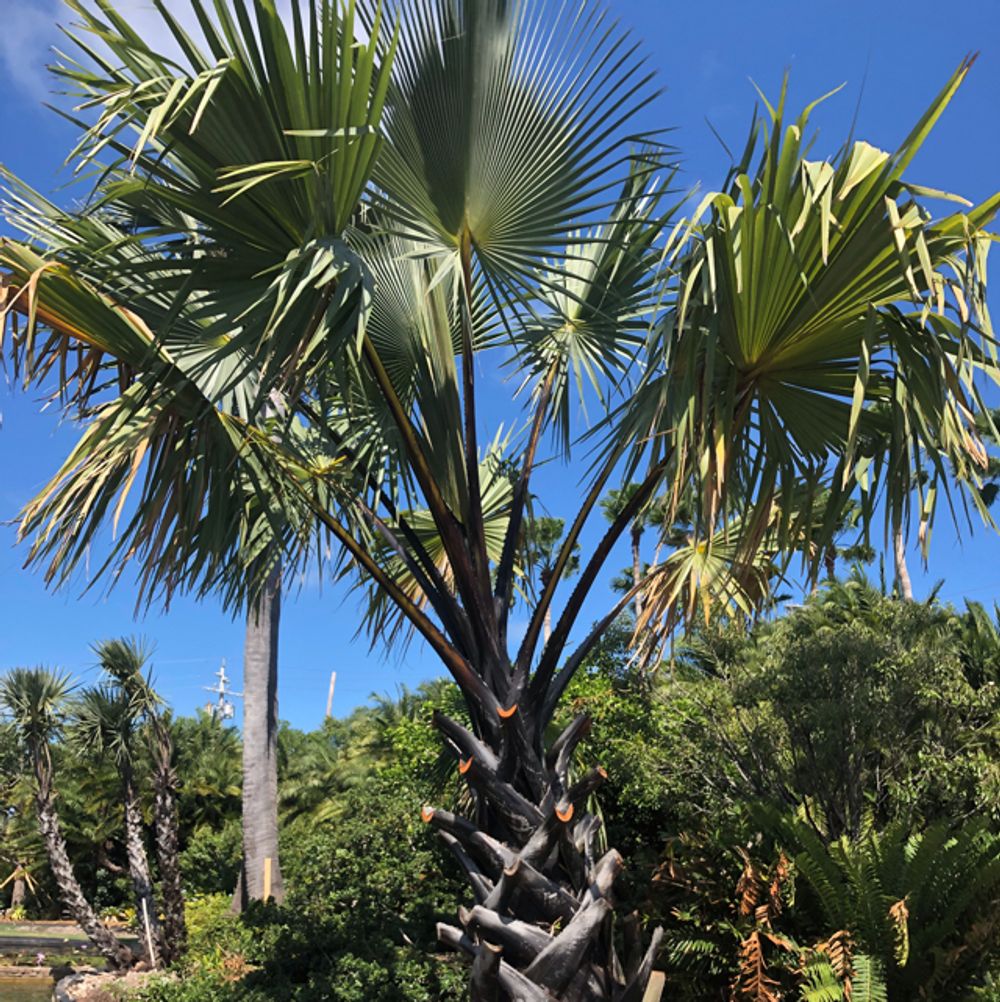Palmyra palm
(Borassus aethiopum)

Description
The typical form of Borassus aethiopum is a solitary palm to 25 metres (82 ft) in height and 1 metre (3 ft 3 in) in diameter at the base. In the river bottoms (floodplains) of many East African rivers (the Rufiji in Tanzania and the Tana in Kenya among others) a closely related form can be up to seven feet (2.1 meters) thick at breast height (4 feet (1.2 meters) above ground) and having the same thickness in its upper ventricosity. It also has a height of up to 100 feet (30.5 meters) The fan-shaped leaves are 3 metres (9.8 ft) wide (larger, to 12 feet (3.66 meters) in the bottomlands form) with petioles 2 metres (6 ft 7 in) long; the margins are armed with spines. In male plants, the small flowers are largely concealed within the scaly catkins; the much larger female flowers reach 2 centimetres (0.79 in) wide and produce yellow to brown fruits. Each fruit contains 1-3 seeds, each enclosed within a woody endocarp. The floodplains variety is almost certainly the most massive of all palms.
Taxonomic tree:







